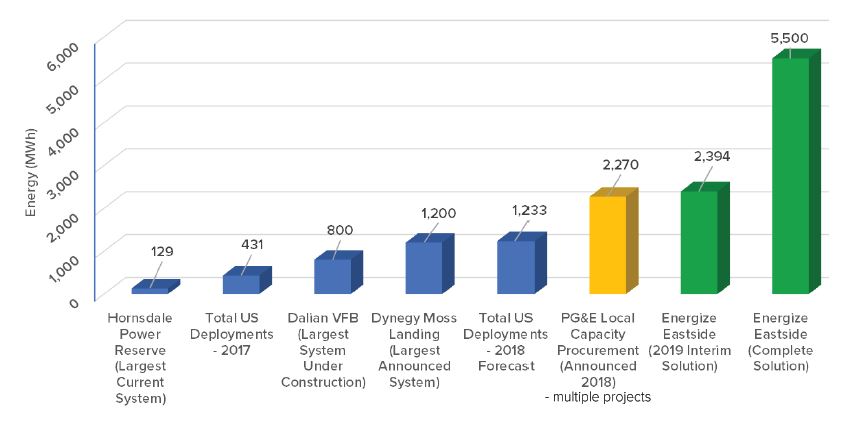- Is battery storage a solution for the Eastside’s energy needs?
Despite the progress made by the energy storage industry in recent years, an updated analysis concluded that battery storage is still not a practical solution to meet the Eastside transmission system capacity deficiency.
“Strategen does not believe energy storage to be a practical option to meet the Eastside transmission capacity deficiency, either as an alternative to the proposed transmission solution or as a way to defer it."
-Strategen Consulting, Eastside System Energy Storage Alternatives Assessment Report Update - September 2018
An Eastside battery project would:
- Be significantly more expensive than PSE’s plan to upgrade transmission lines along the existing corridor. Battery storage would cost approximately $825 million for a short-term solution and $1.4 billion for the complete solution, compared to an estimated $150 million to $300 million for Energize Eastside.
- Require a huge battery farm on a scale that has never been built. To meet Eastside demand, a battery project would be up to 43 times larger than the world’s largest operational project (Tesla’s Hornsdale project in South Australia).
- Exceed the supply of energy storage systems. The commercial and supply-chain viability of an energy storage system for the Eastside area is unclear as it would exceed total U.S. energy storage deployments in 2017 by approximately 6-13 times.
PSE’s Energize Eastside project remains the right solution, and by upgrading the infrastructure on the existing corridor, it limits impacts on Eastside communities.
View the full report for more information.




.jpg)